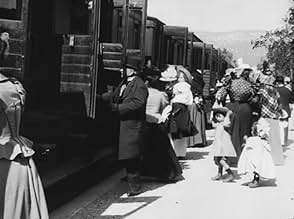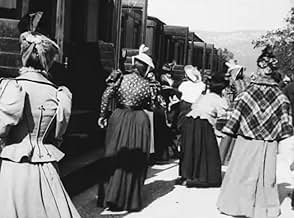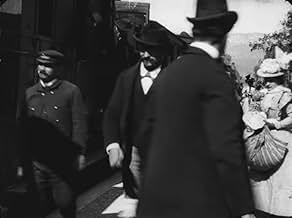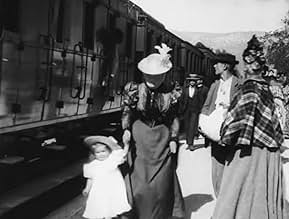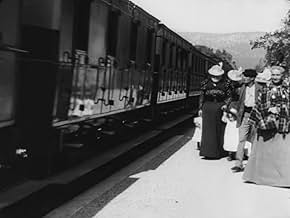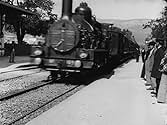IMDb-BEWERTUNG
7,4/10
13.396
IHRE BEWERTUNG
Füge eine Handlung in deiner Sprache hinzuA train arrives at La Ciotat station.A train arrives at La Ciotat station.A train arrives at La Ciotat station.
Handlung
WUSSTEST DU SCHON:
- WissenswertesPopular legend has it that, when this film was shown, the audience fled in terror, fearing being run over by the "approaching" train. This legend has since been identified as promotional embellishment, though there is evidence to suggest that people were astounded at the capabilities of the Lumières' cinématographe.
- VerbindungenEdited into Louis Lumière (1968)
Ausgewählte Rezension
I have little to add to other reviewers, except to say that this film took a sudden importance in my life last year. In 2002 I was travelling by train to my first ever Cannes Film Festival. At one point the train was moving slowly and I looked out of the window and found that we were pulling through La Ciotat, and the platform hadn't changed a bit. Sadly the train didn't stop, otherwise I would have been tempted to jump off for a moment, but given the purpose of my journey I felt a strange thrill at being there. Just a little personal anecdote, but perhaps it shows something of the power and importance of those early steps in film.
- TyrconnellPictures
- 15. Nov. 2003
- Permalink
Top-Auswahl
Melde dich zum Bewerten an und greife auf die Watchlist für personalisierte Empfehlungen zu.
Details
- Laufzeit1 Minute
- Farbe
- Sound-Mix
- Seitenverhältnis
- 1.31 : 1
Zu dieser Seite beitragen
Bearbeitung vorschlagen oder fehlenden Inhalt hinzufügen

Oberste Lücke
By what name was Ankunft eines Zuges in La Ciotat (1896) officially released in India in English?
Antwort
